We Need to Understand Why Bees Are Dying
Why are bees disappearing? This is a question that needs an answer because bees are the most important pollinators on earth. In order to find the answer to our question, we should know a little bit about bees.
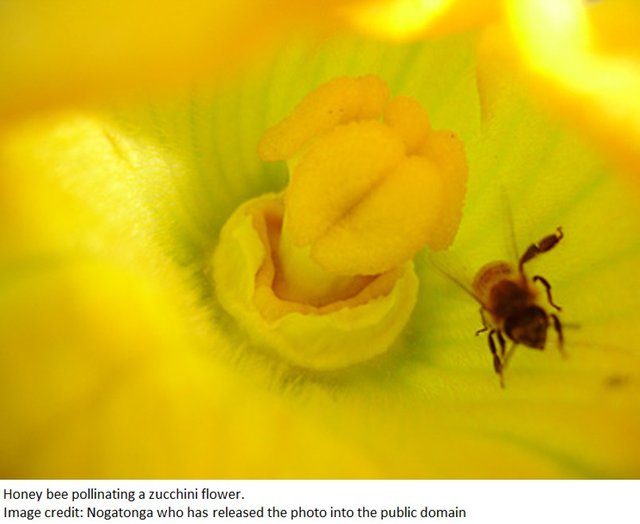
Bee Society
Bees live in a highly structured society, with a clear division of labor. At the top of the labor pyramid is the queen, the single most powerful member of the hive, and she is accorded the respect due such a high status. Below the queen are drones and worker bees. Worker bees are by far the most numerous members of a bee colony.
The activity of all members of a bee colony are ultimately directed toward one goal: Insure the health and survival of the next generation. Every member of the hive team--queen, worker, and drone--is necessary to achieve this goal.
Image of a queen and worker bee, showing relative size. This picture was taken by a U.S. Border Patrol Agent. As a work of a government employee, the photo is in the public domain.
The Queen
The queen's most essential functions are to reproduce (that is, lay eggs) and to communicate with other members of the hive through the release of chemicals (the queen pheromone.) The queen unites the hive with this chemical communication. In the course of a lifetime--between three to five years--a successful queen may produce 500,000 eggs. There are some sources that put this number as high as a million.
About five days after emerging from a pupa, a new queen will leave the nest to mate. She may make this flight twice in her lifetime, rarely more than that because every time she leaves the nest she places herself at risk. During the flight she will encounter thousands of drones who are swarming in anticipation of an encounter with a queen. It is important that the queen mate with drones from other hives because this insures genetic diversity and helps to provide immunity to pathogens. The queen may mate with ten or 20 drones on each flight. She collects their sperm and stores it in a pouch, which is called the spermatheca.
When a queen can no longer produce eggs or cannot produce sufficient pheromone to hold the hive together, she is replaced. The process of replacement can be rather gruesome: The workers gather round and smother her to death. This execution of the queen provides an opportunity for another bee to advance. A worker may be designated as the new queen. If a new queen is not established quickly, the hive will fail.
A Swarm
When a queen dies, or becomes too weak to produce eggs, worker bees take charge of the situation. Ordinarily, a healthy queen releases a chemical that prevents worker bees (who are also female) from producing eggs. When this chemical is no longer present, workers may start to produce eggs.
Other worker bees prepare cells for a new queen to grow. They nurture the chosen eggs with royal jelly through a rapid period of development. Several potential new queens may emerge--these may fight, to the death, for primacy in the hive.
A swarm around the hive of a dead queen likely indicates that workers are prepared to take a new queen and perhaps fly off to establish a new nest with her.
Worker Bees
Honeybee workers fan the entrance to the hive. Picture credit: Ken Thomas, released into the public domain.
Of the many tasks worker bees carry out, one is to cool the nest. Here they are fanning the entrance to the hive. Sometimes, drones may help with this chore. In order for the brood to develop properly, the nest temperature must be maintained within a certain range. If temperatures fall below that range, workers gather around the brood to keep the developing bees warm.
Worker bees pretty much live up to their name. They prepare the cells in which the eggs will be laid. They tailor the design of the cell to accommodate the three different types of larvae--queen, drone and worker. When the queen lays her eggs, she recognizes that the larger cells are intended for drones. As she deposits eggs in these cells, she will not fertilize them. The rest of the cells, the overwhelming majority, will be filled with fertilized eggs. Bees that emerge from these fertilized eggs will all be female.
The developing bees together are called the brood. It is the workers' job to nurse the brood, to see that developing bees are in good condition, to nourish them and to keep the cells clean. Workers also feed the queen, constantly. They forage for food and bring it back to the colony. When they return, they communicate to nest mates what they discovered on their forage flight. They let the other bees know where the best pollen is and how to get there. Although bees don't talk, in the sense that humans do, they "talk" by dancing. This very elaborate "waggle" dance is specific to each event and contains precise information. Scientists are still discovering how to interpret the bees' sophisticated system of communication.
The relative sizes of three adult honey bees represented: The drone is at the top, the queen in the middle and the worker bee at the bottom. From the Encyclopedia Britannica, 1911. Public domain. Copyright expired
Drones
Drones live for the glorious moment when they might share their genetic material with the queen. Most drones will never achieve this goal, for they must engage in fierce competition to mate with a queen.
Mating occurs mid flight. Conditions have to be perfect. The queen has to be sufficiently mature, the weather hast to be fine, and a drone must manage somehow to distinguish himself in a swarm so that he can mount the queen. This is a costly prize, for in almost every instance the drone will sacrifice his life with the act of mating. His endophallus, the instrument through which he delivers sperm, will be torn from his body and this trauma will kill him in a very short time.
Drones who don't get to mate may reside in the nest for a while, but eventually will be forced out by worker bees, because food cannot be spared to support them.
After mating, the queen returns to the nest. She has enough sperm to fertilize millions of eggs. This is when the organization of the hive gets really remarkable.
A honey bee drone. Image source: Pixabay
The Brood
The brood is the center of activity in the hive. If something doesn't contribute to the survival of the brood, it is ejected from the nest.
Bees go through three stages of development before they reach maturity: egg, larva and pupa. Egg cells, built by worker bees, are designed to accommodate different types of bees. Large cells signal to the queen that an egg will be deposited but not fertilized. These unfertilized eggs will each receive royal jelly for only the first three days as larva, and will ultimately emerge as drones (males).
The rest of the cells prepared by worker bees will accommodate fertilized eggs (females). Some of these will develop into queens. Most will develop into worker bees. Nutrition essentially determines which role a female bee will play. Those destined to be queen will be fed on a rich diet of royal jelly throughout their larval development, and for their entire rule as queens. The drones and workers will be fed royal jelly for the first three days of life and then a mixture called bee bread, which is comprised of pollen and nectar, or honey.
At the end of the larval period, the larvae spin cocoons around themselves and become pupa, where the remainder of their development continues. Worker bees cap the cells that contain the pupa. At the end of this period, the mature bee emerges. The total period of development varies for worker, queen and drone. The shortest is queen--this may be around fourteen days. The longest is the drone--about twenty-five days. Worker bee development takes about eighteen days.
Still frame captured from a United States Department of Agriculture Video. The frame shows worker bees tending a brood. Public domain
Why Are Bees in Trouble?
Colony Collapse Disorder: Some Identified Causes
Bees are highly intelligent and have an exquisite social organization that has allowed them to thrive for millions of years. In light of the species' evolutionary success, Colony Collapse Disorder has sent scientists scrambling for answers. The most commonly offered explanation for colony collapse is assault by pathogens. But why do bees suddenly seem to have a catastrophic vulnerability to pathogens?
Intensive Agricultural Practices: Loss of Plant Diversity/ Loss of Habitat Affects Gut Biome
Ecologists at Lancaster University in England looked at bee bread (fed to developing larvae) in areas where traditional land use had been altered. They discovered that foraging by honey bees was affected by a lack of diversity in the surrounding environment. In an undisturbed setting, bees will collect a variety of bacteria from different plant species. This bacteria is important for the bee's gut biome--the organic factory, as it were, in which bee bread is produced. Some of these bacteria are "baked" into the bread and help to imbue larvae with immunity to a variety of pathogens. By limiting available bacteria, altered land use deprives bees of immunity that would traditionally help them fight off many pathogens. Also, without diverse bacteria in bee bread, there is a greater tendency for the bread to grow mold.
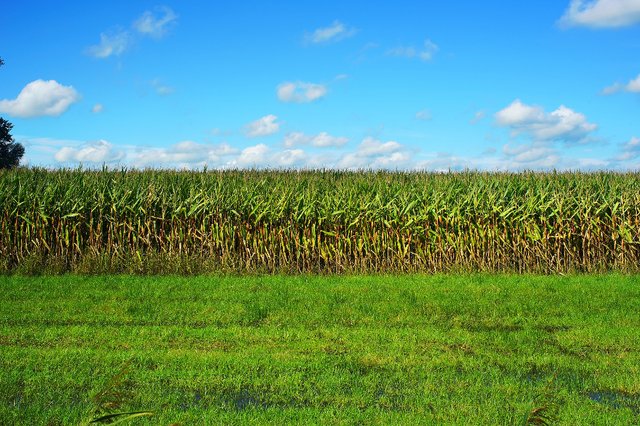
A field of maize. Picture source: Pixabay
Loss of Plant Diversity Affects Bee Nutrition
Environmentalists in France looked at the effect intensive agriculture had on bee nutrition. They found that, although for most of the year there was an adequate pollen source to support a bee colony, at certain times this was not true. In this particular instance, it was discovered that during the season when maize blossomed, bees suffered nutritionally because maize does not offer good quality pollen. With a lack of plant diversity on the farm, bees experienced a nutritional deficit. Their diet during maize season, according the the authors of this study, was not adequate "for bee development"
The effect on bee nutrition of niche farming may be repeated in different environments where only poor quality pollen is seasonally available for forage.
Managed Colonies
Bees are big business. Agriculture depends on what are called managed colonies to pollinate crops. Unfortunately, the very act of managing bees increases their mortality rate. The mortality within a managed colony can be increased by stress and by contamination with pathogens. Even outside the managed colony, wild bees suffer from increased mortality because of the existence of managed colonies in the area. This was demonstrated in a study published in Plos One (2017), Do managed bees have negative effects on wild bees?: A systematic review of the literature.) The paper asserts that managed colonies have a strong, though variable effect on wild bees. The most dramatic harm comes from contamination with pathogens introduced by the managed colonies.
Managed bees, in Slovenia. Picture credit: Janev Cebelnjak, who has released the photo into the public domain.
Chemicals
Although representatives of the chemical industry, and some farmers downplay the role of chemicals in colony collapse, research offers evidence that the use of various chemicals in agriculture has been associated with increased bee mortality.
Cited below are several studies, carried out in different environments, that demonstrate a relationship between chemically (pesticides, herbicides and/or fungicides) treated agricultural products and mortality, or sub-lethal harm, in bees. The first study deals with neonicotinoids.
Effect of Neonicotinoids on the Production of Royal Jelly
As as been discussed earlier in this blog, royal jelly is essential in the diet of developing larvae and in the maintenance of the queen. The jelly is produced in a worker bee's hypopharyngeal gland, HPG. Researchers from Auburn University (USA) tried to ascertain if exposure to neonicotinoids affects a bee's HPG, and therefore its ability to produce royal jelly. For their study, the scientists designed an experiment in which one group of bee's was fed a mixture that contained amounts of neonicotinoids approximately equal to what they might receive in forage. Another group of bees was fed the same diet, but without the neonicotinoids. At the end of the experiment, the bees fed the chemical had smaller HPGs. Surprisingly, even nest mates of the neonicotinoid-nourished bees (who had not been fed the chemical), also had smaller HPGs. The incidental exposure was sufficient to bring about this effect.
There has been other research that demonstrates bee strength is related to the size and protein content of the HPG. Therefore, smaller HPGs, caused by exposure to neonicotinoids, has a detrimental effect on the health of a bee colony
Pesticide-Treated Almonds
In an article entitled Effects of Pesticides Applied During Almond Bloom on Post Emergence Mortality Rate of Honey Bees, entomologists from Ohio State University report that application of a commonly used fungicide/pesticide mixture on almond blossoms dramatically increased mortality in bees.
In eight separate trials, bee larvae in the study were fed chemicals commonly used in the production of almonds. Mortality rates among the exposed bees reached 50%. Not only do the results of the study have widespread implications for bee health, but the information is also critically important for almond farmers. Bees are essential for pollination of commercially grown almonds.
Blossoming almond trees in California, 2009. Photo credit Bn100, who has released the image into the public domain.
Mechanical Threshing Leads to Aerosolization and Widespread Dispersal of Chemically Treated Corn
__
In an article entitled Planting of neonicotinoid-coated corn raises honey bee mortality and sets back colony development, biologists from the University of Quebec report increased mortality for bees raised in corn-producing areas as opposed to those raised in areas free of corn plants. The biologists found that corn-producing areas had a bee mortality rate 3.5 times higher than bees in corn-free areas.
Another article on neonicotinoid use in corn cultivation explains how mechanical sowing leads to aerosolization of contaminated particles. Pollen is diffusely coated with these particles. The increased bee mortality correlated with corn-planting seasons.
Threshing Machine, made by the Case Corporation, 1942. Image credit: Steve Strummer, who has released the photo into the public domain.
Exposure to Widely-Used Herbicide Impedes Bee Navigation
In 2015 the Journal of Experimental Biology published a study that demonstrated exposure to glyphosate interfered with a bee's ability to navigate. What this means is, a foraging bee will have greater difficulty returning to its nest if it has been exposed to glyphosate. Earlier in this blog, the duties of a worker bee were described. Worker bees provide food for the nest. They forage, discover food sources and not only return with food, but also communicate, through the waggle dance, where they have been and what they have found. Therefore, the efficiency and accuracy of a bee's navigation directly affects the well-being of a colony.
Glyphosate is the most widely used agricultural chemical in the world.
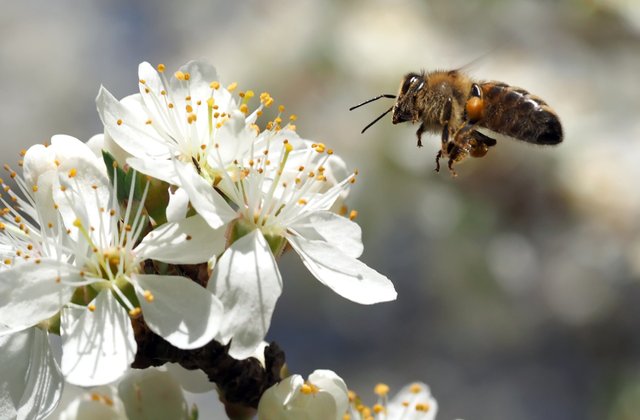
A foraging honey bee. Image source: Pixabay
The direct and dramatic role of pathogens in colony collapse has not been discussed here in any detail. An epidemic of pathogens is literally taking down colonies. There is space in another blog to discuss these different pathogens and their role in Colony Collapse Disorder. What is certain, and is addressed here, is the role that human activity plays in bee vulnerability to pathogens. Weakened immune systems and increased exposure greatly magnify the toll pathogens take on bee colonies.
Bees have been friends of the earth for millions of years--friends to plants and animals alike. Humans must find a way to coexist with these friends in a way that benefits both species.
Sources for this article:
https://phys.org/news/2018-01-worldwide-importance-honey-bees-natural.html
https://agdev.anr.udel.edu/maarec/honey-bee-biology/the-colony-and-its-organization/
https://wildflowermeadows.com/2017/08/queen-pheromone/
https://americanbeejournal.com/the-members-of-a-honey-bee-colony/
http://honeylove.org/forums/topic/queen-mating-flights-how-many-how-long-how-to-gauge-sufficiency/
http://honeybee.drawwing.org/book/spermatheca
https://www.perfectbee.com/learn-about-bees/the-science-of-bees/honey-bees-reproduce/
https://www.newscientist.com/article/dn6069-honeybees-genes-key-to-hive-air-conditioning/
https://www.amnh.org/explore/news-blogs/on-exhibit-posts/decoding-the-honey-bee-s-waggle-dance/
https://www.perfectbee.com/learn-about-bees/the-life-of-bees/the-role-of-the-worker-bee/
https://www.thoughtco.com/sexual-suicide-by-honey-bees-1968100
https://www.beeculture.com/royal-jelly-worker-bee-produced-protein-rich-mothers-milk/
https://www.amentsoc.org/insects/glossary/terms/bee-bread
https://www.perfectbee.com/learn-about-bees/the-science-of-bees/honey-bee-life-cycle/
https://owlcation.com/stem/How-Smart-are-Honey-Bees
https://www.scientificamerican.com/article/the-beguiling-history-of-bees-excerpt/
https://phys.org/news/2018-04-honeybees-struggling-good-bacteria.html
https://www.ncbi.nlm.nih.gov/pmc/articles/PMC5025243/
https://www.nature.com/articles/srep32023
https://www.ecohealthalliance.org/wp-content/uploads/2016/11/Smith-et-al_HoneyBee_EH-2014.pdf
http://journals.plos.org/plosone/article?id=10.1371/journal.pone.0189268
https://media.bayer.com/baynews/baynews.nsf/id/Neonicotinoid-ban-a-sad-day-for-farmers-and-a-bad-deal-for-Europe
http://www.deltafarmpress.com/management/what-would-ban-neonicotinoids-mean
https://www.tandfonline.com/doi/full/10.1080/0005772X.2018.1450208
https://www.ncbi.nlm.nih.gov/pmc/articles/PMC4814072/
https://kb.osu.edu/dspace/handle/1811/84892
https://www.ncbi.nlm.nih.gov/pubmed/28828265
http://jeb.biologists.org/content/218/17/2799.long
http://pmep.cce.cornell.edu/profiles/extoxnet/dienochlor-glyphosate/glyphosate-ext.html
http://www.newsweek.com/glyphosate-now-most-used-agricultural-chemical-ever-422419
https://bees.techno-science.ca/english/bees/life-in-a-hive/stages.php
http://articles.extension.org/pages/73133/honey-bee-queens:-evaluating-the-most-important-colony-member
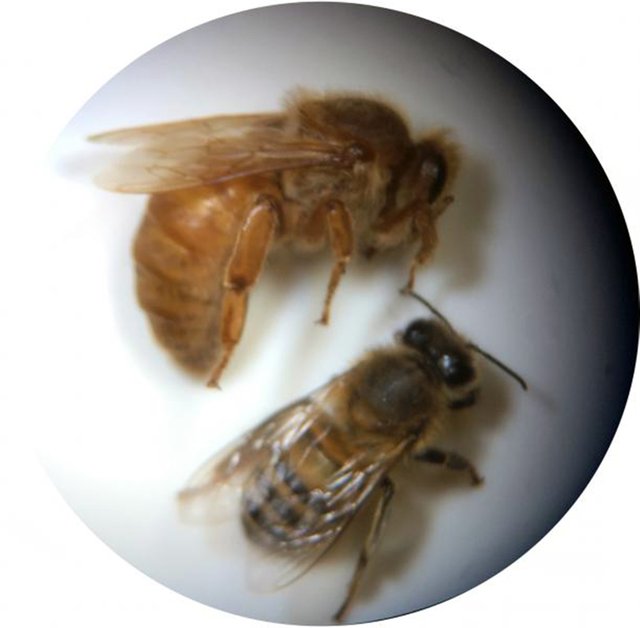
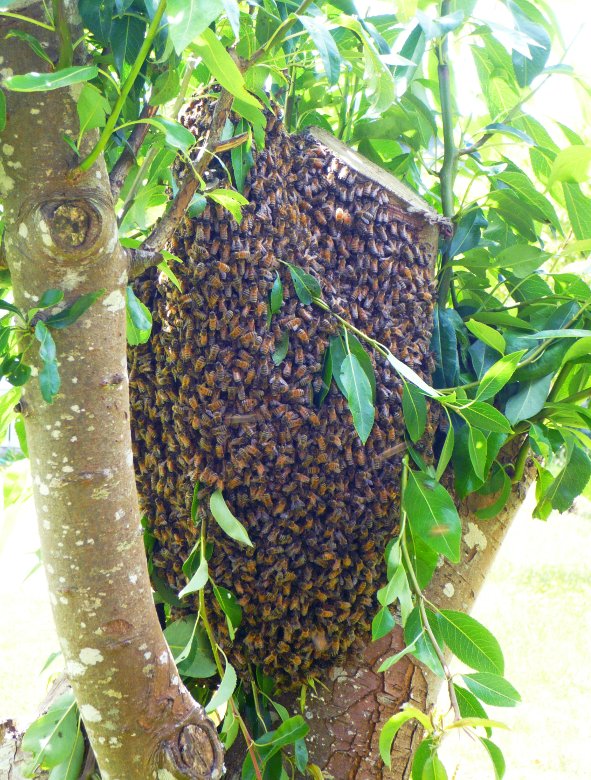
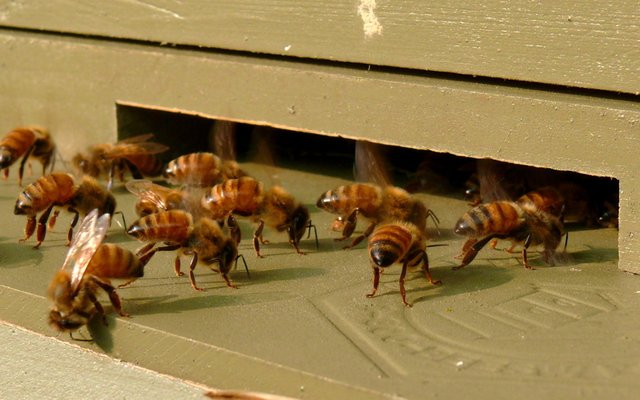
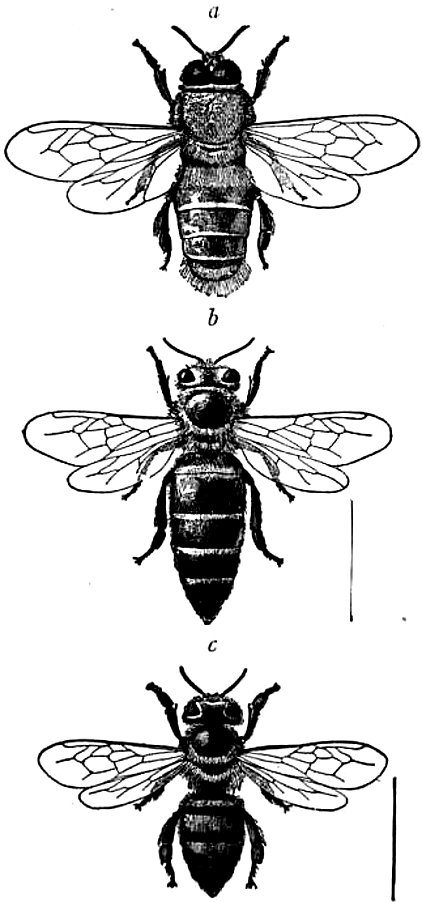
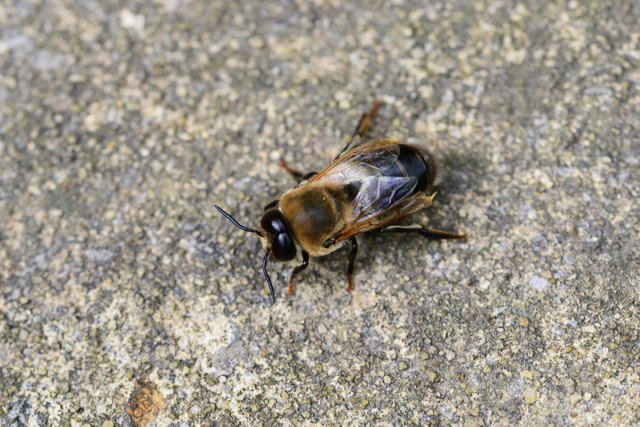
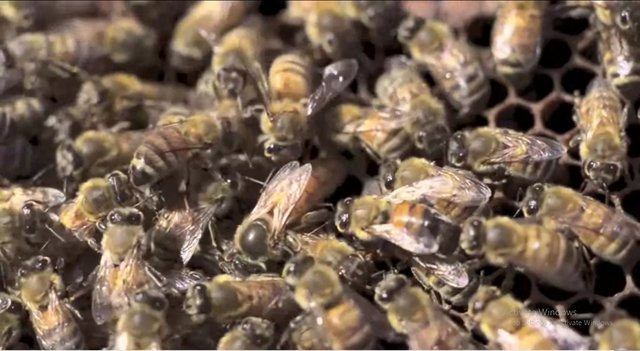
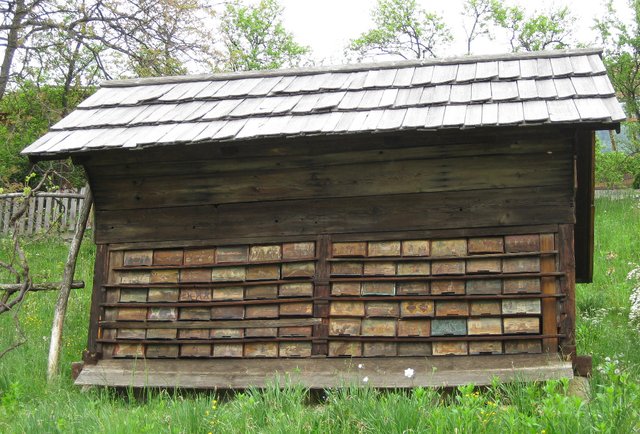
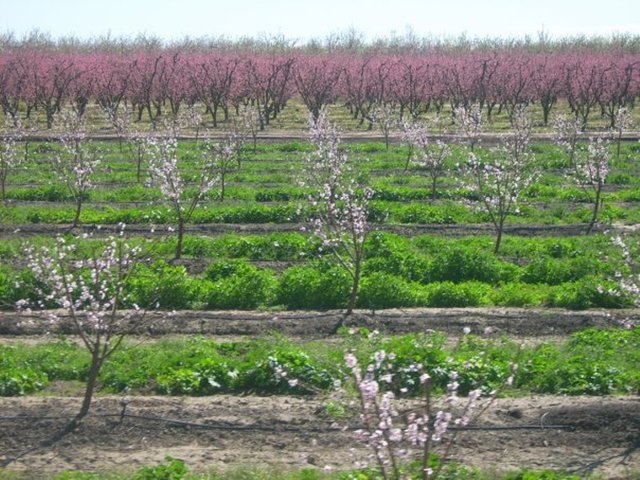

resteemed this important post. I was researching in pesticides, especialy the mixed effect (much higher and overlooked by the so called "safty regulators") Bullshit. I stoped now, first you will never earn money in the environmental space, you dont even get a job. Second: Nobody wants research. If we would do real science (not this loby- single-substance-bullshit) than we would have to stop most of the things we do right now. We are in the 4th mass extinction the earth has seen since beginning and this time its man-made. Ppl dont understand the dynamics of ecosystem collaps, the even dont understand the dynamics of the systems it self. The whole field of "scinece" is lacking scientific approaches. Sad but it will happen, just a question of time.
Daunting, to think of the number of ways we seem to be hurling toward extinction. We lack the "swarm" intelligence of some invertebrates that organize toward group survival. Global warming, pollution, thermonuclear war--to name a few obvious ways we can bring about our destruction. Just have to work at what we can. Enlighten ourselves, spread the word. It's like we're on a big boat without a captain--everybody has to pick up an oar and work harder. Thanks for commenting. I just woke up and read your comment. Need a cup of coffee...:)
I remember someone telling me that if two queen bees hatch simultaneously, they immediately fight until one is dead.
Also, if any prospective queen bee is incubating or hatching during a current queen bee's reign, it is killed by the current queen as soon as possible. Is that true?
Namaste, JaiChai
Yes! Queens have enormous stingers and sting competitors to death. It is a fight for survival in the hive, in every respect. A rather gruesome description here http://honeybee.drawwing.org/book/queen-fighting
And thanks for reading! Peace to you.
May you and yours be well and love life today.
Namaste, JaiChai
Great information on an important topic. Thanks.
Thank you! I never know, when I've finished writing a blog, if it will find an audience. Sometimes I latch onto ideas nobody cares about. Bees are important. Glad so many people agree.
I´ve been alerting people for this fact since 2014...And people still seem to don´t understand the implications of bees extinction...
We have to keep talking, and writing. I think, with the facts, it's hard to deny the human role in Colony Collapse. And if people don't understand how important bees are to the earth--wow, that's a problem. Thanks for reading and commenting.
I will follow you and try to help in the cause. If the bees die there is a big chance we go extinct...
Thank you! And I have followed you. Look forward to reading your blog.
Absolutely amazing article @agmoore. I wish society as a whole would try to understand why this is so important. Human arrogance I guess. I agree with pesticides playing a huge part in this then along with lack of variety in diet and so much more. I had someone once tell me it was 'hogwash' I said don't come crying to me when you no longer have coffee or chocolate.
Thank you! I tried to make the case without resorting to emotion. Build slowly and show the evidence. Hard work is rewarded when someone appreciates it, as you have.
It's hard on a subject like this not to get emotional. So much depends the bees surviving. Your hard work definitely shows. I can't imagine how much time you put into this. From me it is very much appreciated.
Thank you again. Usually pick subjects I care about for my blogs. Hard not to care about bees. And it was a lot of time :)
The life of bees is so alien.. So cruel that I do not understand how in such a cruel world we managed to have a compassion?
Sorry for delayed reply, I was waiting for this post and shame on me, I missed it! :(
But I'm so glad that your great work was appreciated!
Your feedback is much appreciated. I always pick subjects that interest me, personally. These do not always interest other people. So nice to see this post well received. The bees deserve it :)
I hope their population will be stable in near future...
wow your post is very good.
honey is very much its benefits
Honey is known as an integral part of fertility therapy and pregnancy planning. The benefits can be felt by men and women. Especially in men, honey can even treat impotence. Research published in the Journal of Animal Physiology and Animal Nutrition suggests that drinking pure honey on a regular basis can optimize testicular function and ultimately increase male sperm count and fertility. In addition, honey can also treat erectile dysfunction in men.
I do appreciate your reading that long post. It all seemed important to the discussion so I didn't make it shorter. Thanks for your information. I think if we can avoid commercial pharmaceuticals, sometimes nature does have a better answer.
good luck always for you @agmoore
Thank you! Same to you
I don't know why but I was always under the impression the queen bee must have mated inside the hive where she lived, so I found it really interesting to learn otherwise.
As for why they're dying - it really is up to us humans to become more aware of what we are doing as it affects so many other creatures!
Let's hope we can turn things around in time. fingers crossed
(artist unknown)
Yes, fingers crossed. And I think each of us has to engage, somehow. Calmly and civilly do what we can. Since I wrote this blog I've been looking at bees as a larger subject. Wow. It is big. Honey bees are just the beginning. @ecoinstant alerted me to the invasive nature of honey bees--fascinating. I've been reading every since. Stay tuned :)
Thanks for your feedback!
Cool, I'll keep a look out then :)
I am really into bumble bees now, especially since I learned how much more efficient they are in the garden than say the honey bee. Their only downside being they don't give us honey, lol. But I keep them in mind as I plan my garden planting each year.
I really like bumble bees too. And it's a native species (I didn't know that). Just started reading about them. It seems only the females sting--but I wouldn't stop to determine gender before annoying :) Have fun in your garden!
May you provide the references you used? STEM rules :)
Sure--I put links to them in the piece but will gladly list at the end of the post. Give me a couple of minutes :)
Lists are more impressive :)
And it's easier for curators to check the quality
Thanks for the feedback. Hope I listed them all. I try to be careful but sometimes I can lose track of something. Was working on this for a while. Learned a lot about bees :)
Wow this is an amazing post and a great appreciation bees, their important work for nature (and especially for us) and their way of life. Thank you so much for this. I like bees, in my garden there are many plants for them... Just som minutes ago me and my little grandson were watching the bees in our Oregano! He enjoyed watching and listening very much! ❤️ So i hope that he will remember bees when he is getting older...
I appreciate bees now, as I never did before. Almost forget they sting. My interest grew as I learned. It was all pretty new to me at first. I started with a question about intelligence and then just kept reading. I wrote this blog and more doors opened, more questions came to mind.
It's wonderful to see people respond, that people care. For me, this is the whole point of writing. As for your grandson, if he sees that you respect bees, he will also. They learn from us.
Thanks so much for your lovely comment.
Thanks for your reply. This is the way i love being on this platform. Getting knowledge/infos/wisdom from others and "meet" people who are living by heart. You are one of them - thank you so much and go for the bees and for life everywhere.
I am sure my grandson learns from me and i can see now that we "wise grown up people" can learn many many things from the children - we just have to listen to them, watch them acting and laughing...
:) Lucky grandson...
Hihi thank you - i think it is win-win ;-)